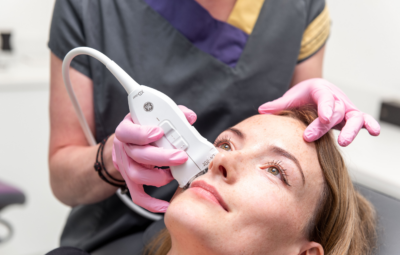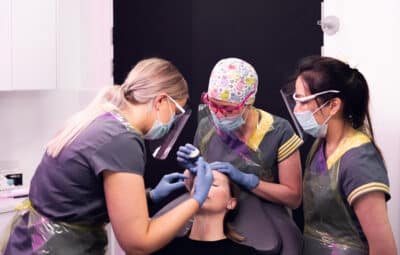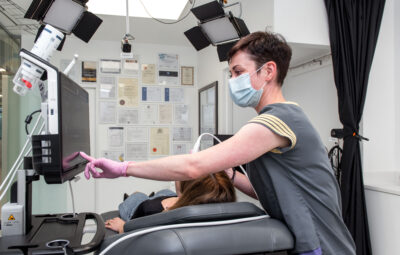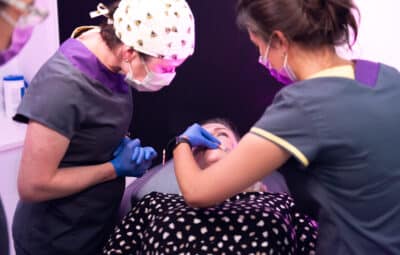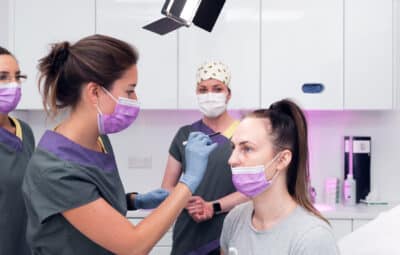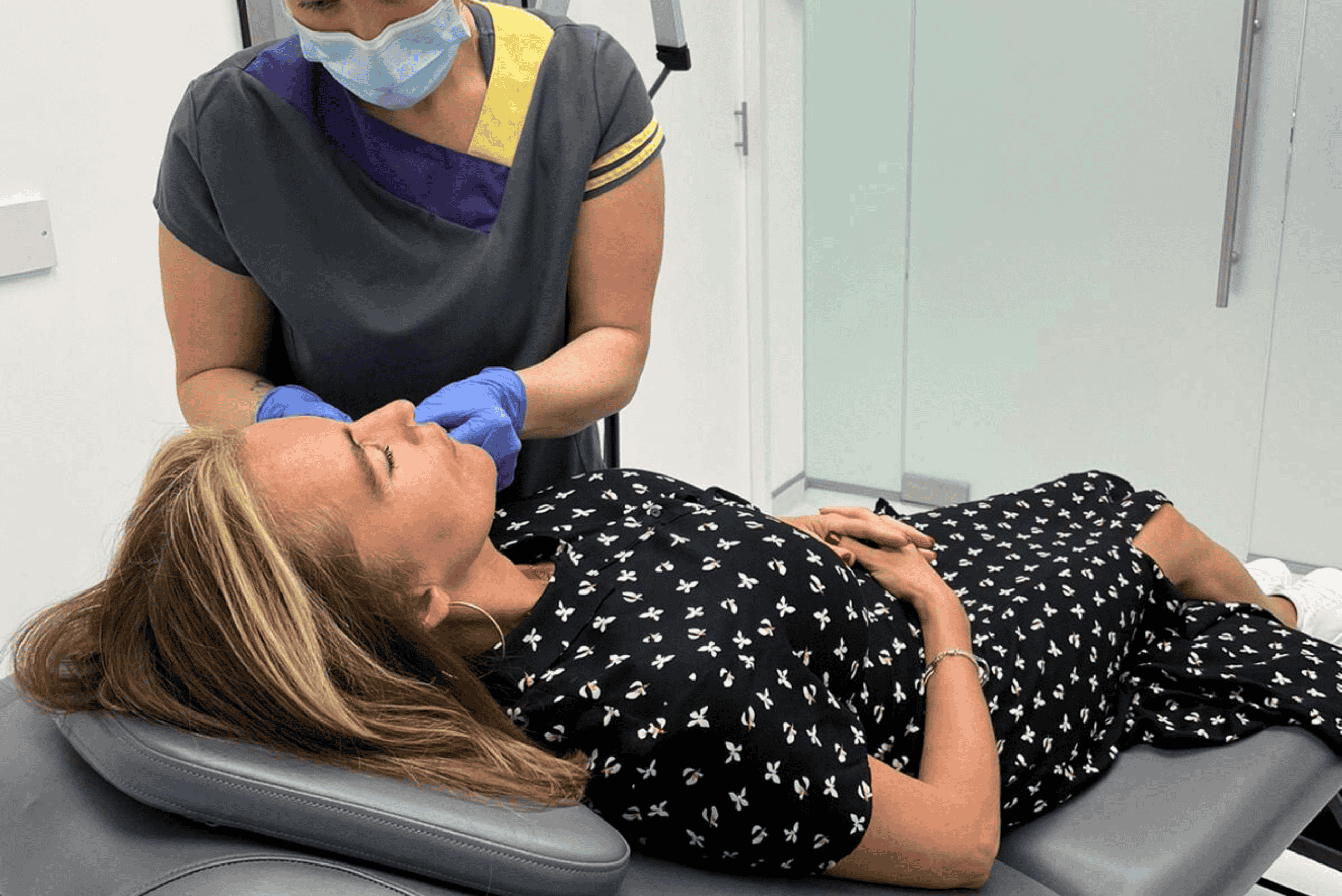
How to Inject Polynucleotides: Different Techniques Explained
16 October 2025
In this post:
- Polynucleotides behave differently than HA fillers, requiring specific injection techniques to avoid complications like nodules or poor product distribution.
- Correct tissue depth is critical. Injection too superficially causes visible lumps, while injecting too deeply reduces efficacy.
- The choice between needle and cannula is driven by clinical factors, not necessarily practitioner preference.
- Proper technique requires an understanding of product flow, inflammatory response management, and patient selection.
Maybe you’ve been injecting dermal fillers for a few years now. You’ve solidified your technique, your results are consistent, and your patients keep coming back. Chances are you’ve reached a point where you’re ready to expand your treatment offerings. Polynucleotides are likely one of the first treatments to come to mind, especially with how much they’ve risen in popularity in the last few months.
But here’s the thing: you can’t inject polynucleotides the way you inject dermal fillers. Polynucleotides require an entirely different technique and approach. In this post, we’ll dive into some considerations for how to inject polynucleotides so you can be fully prepared when you integrate this buzzy, new treatment into your practice.
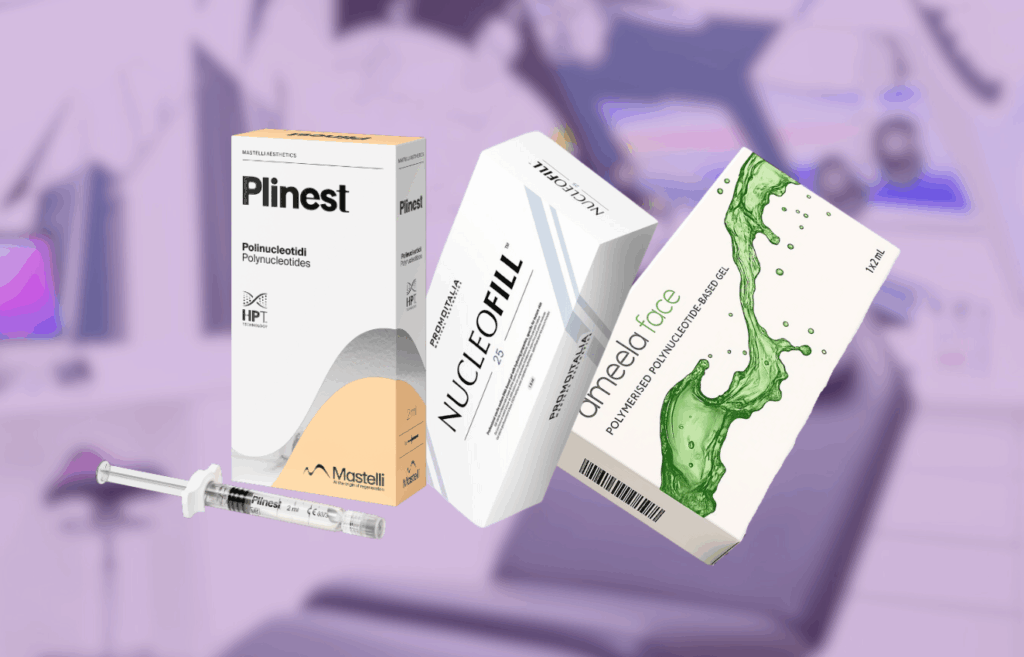
How to Inject Polynucleotides
Unlike hyaluronic acid dermal fillers, polynucleotides have a different viscosity, contain no local anaesthetic, and trigger a deliberate inflammatory response as part of their mechanism of action.
Poor polynucleotide injection technique doesn’t just mean subpar results. It leads to visible complications that patients can see and feel. This can present as:
- Nodules from superficial placement
- Uneven distribution creating patchy results
- Excessive inflammation that extends recovery time and causes patient distress
As Dr MJ Rowland-Warmann, founder and lead instructor at the Smileworks Aesthetic Training HUB, explains: ‘Following a product protocol isn’t the same as mastering injection technique. Anyone can read instructions, but we must understand why we’re placing product at a specific depth, at a specific speed, and in a specific pattern.’
How Deep to Inject Polynucleotides
When it comes to how to inject polynucleotides, getting the depth right is critical.
Polynucleotides work through bio-stimulation, which means they need to be placed where fibroblasts can be activated. This typically means the deep dermal layer or subcutaneous fat, depending on the treatment goals and area. The problem is that identifying these tissue planes accurately without proper anatomical knowledge is where most inexperienced practitioners run into trouble.
Inject too superficially, and you’ll create visible nodules or lumps that patients can see and feel. This results in a complication that can take weeks to treat.
Inject too deeply, and the product ends up beyond the largest tissue where fibroblast activation is meant to occur. This results in minimal results and a dissatisfied patient.
The anatomical danger zones for polynucleotides mirror those for other injectables, but the consequences of poor placement can be more pronounced. Understanding facial anatomy through textbooks provides a foundation, but it’s nowhere near enough.
The use of facial ultrasound in practice transforms your practice entirely. When you can visualise the exact tissue plane you’re targeting in real time, depth precision becomes easy.
Needle vs Cannula
The needle versus cannula debate for polynucleotides often gets oversimplified into ‘needle for small areas, cannula for large areas.’ This approach ignores the clinical complexity that should actually drive your technique choice.
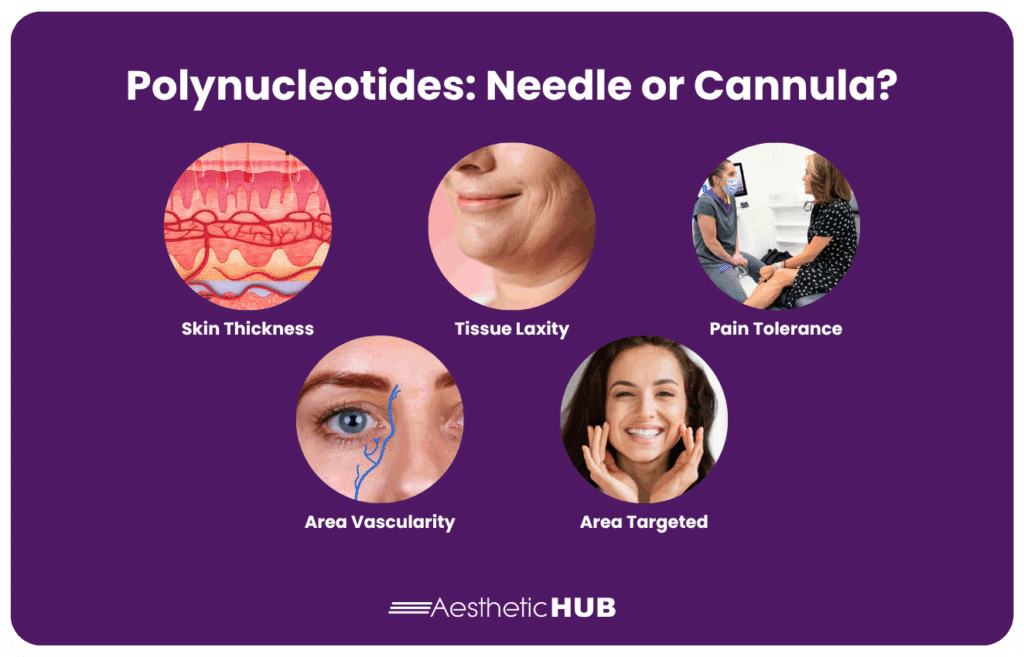
Your decision should be based on:
- Skin thickness in the treatment area
- Degree of tissue laxity
- Patient pain tolerance
- Area vascularity
- The specific depth you’re targeting
Needle technique provides superior control in areas where you need precise placement, such as the tear trough or orbital rim. However, needles do create more trauma points. Each injection punctures the skin, creating multiple entry sites that contribute to post-treatment inflammation and an increased risk of bruising.
Cannula technique reduces overall tissue trauma through fewer entry points. The blunt tip means you’re less likely to puncture vessels, making it particularly valuable in vascular areas. For larger treatment zones like full cheek rejuvenation, the cannula allows you to cover more territory with less trauma.
Cannulas do, however, require a higher skill level to use effectively. The feedback you get through a cannula is also different from needle feedback. You need to understand how to navigate tissue planes and maintain correct depth throughout the pass. Poor cannula technique results in uneven distribution, with product clustering at certain points while others remain untreated.
The error many practitioners make is choosing their technique based on personal comfort rather than what’s best for the patient. Neither approach serves your patient optimally if you’re not making the decision clinically.
Other Technical Considerations
Viscosity
Product flow with polynucleotides behaves differently than with HA fillers. Generally, polynucleotides are less viscous, which means they spread more readily through the tissue. This affects both your injection speed and the pressure you apply.
Injecting too quickly risks product migration beyond the intended treatment zone. Slow, controlled injection gives you better command over product placement and allows you to feel tissue resistance as you inject.
Volume Per Injection Point
This matters more than most practitioners realise. Overloading a single area creates visible lumps and excessive localised inflammation. Understanding how to distribute your total volume across appropriate injection points requires planning before the needle or cannula touches the skin.
Brand-Specific Considerations
Recommended injection techniques vary depending on the brand of polynucleotides used. For example, protocols for some products may recommend a gentle massage to distribute product evenly, while others advise against it to avoid displacing the polynucleotides. Know your specific product’s protocol and follow it.
Different concentrations, different molecular weights, and different viscosities all impact how a polynucleotide will work. The technique that works perfectly for one brand may need adjustment for another.
Pre-Treatment Planning & Patient Selection
Facial assessment for polynucleotide suitability goes beyond just checking for fish allergies. You must evaluate:
- Skin thickness
- Tissue laxity
- Existing volume loss
- The patient’s expectations about what polynucleotides can achieve
Not every patient who comes in asking about polynucleotides is a good candidate. Patients with severe tissue laxity, for example, need surgical intervention, not bio-stimulation. Patients expecting immediate results will be disappointed regardless of how well you perform the treatment.
Your treatment plan shouldn’t be a generic ‘2-3 sessions, 2-4 weeks apart’ approach copied from the product pamphlet. Consider the patient’s age, degree of skin ageing, treatment area size, and their individual healing response.
Documentation before treatment is also essential. Detailed before and after photos protect you professionally and help patients see the gradual changes polynucleotides produce.

Elevate Your Polynucleotide Injection Technique Through Training
The gap between reading about polynucleotide technique and actually mastering is significant. Polynucleotides demand understanding of tissue planes, anatomical precision, and the clinical judgement to adapt your technique to each individual patient. This level of expertise doesn’t come from watching a few training videos.
At the Smileworks Aesthetic Training HUB, we prepare practitioners for the real-world challenges of polynucleotides injection through comprehensive hands-on training.
For advanced practitioners, our Foundation Facial Ultrasound Course and our Advanced Facial Ultrasound Course are essential for anyone serious about injecting with precision. When you can visualise anatomy in real time, your understanding transforms from theoretical to practical.
For those looking for more in-depth polynucleotide training, we recommend booking a one-to-one mentoring session with Dr MJ. These sessions are 100% customisable, and you’ll receive personalised instruction based on your skill level and goals.
Join us at the HUB today. Let’s shape the future of aesthetic medicine together and ensure safe, effective, and transformative results for every patient.
Want to try out our courses before committing? Take advantage of our free trial for a taste of what learning at the HUB is like.
Related blog posts:
